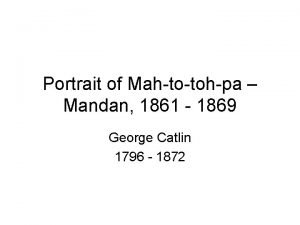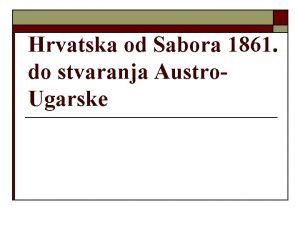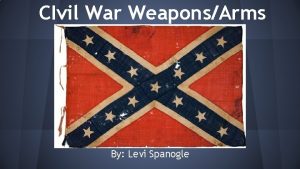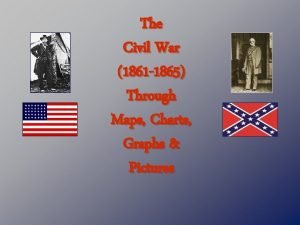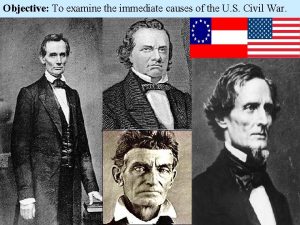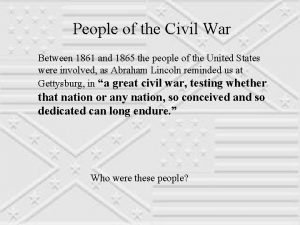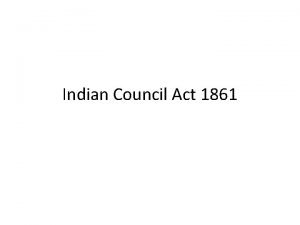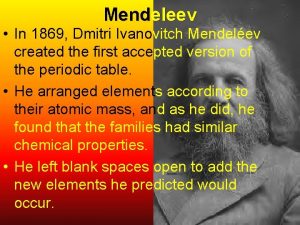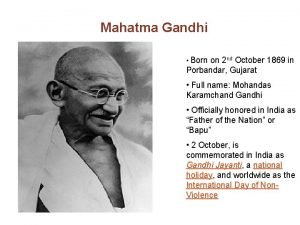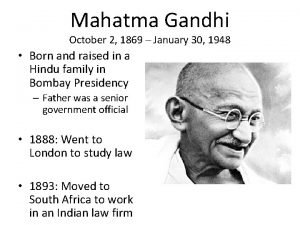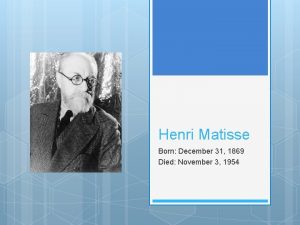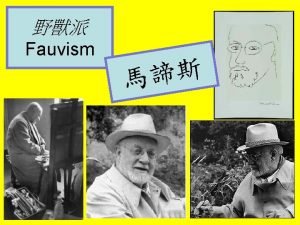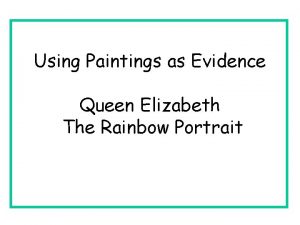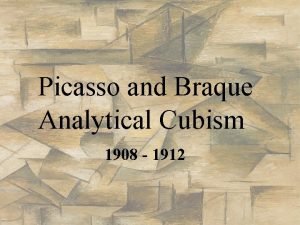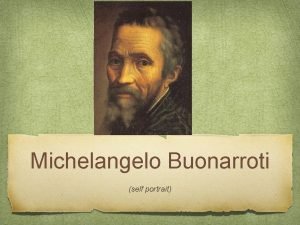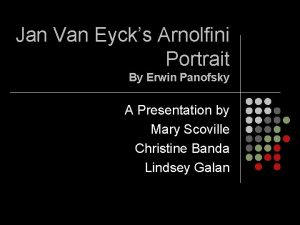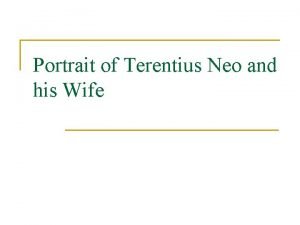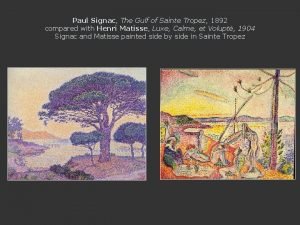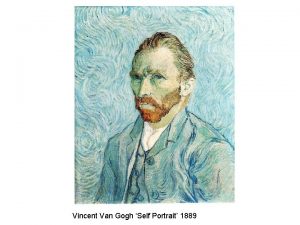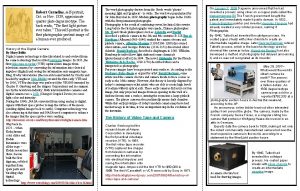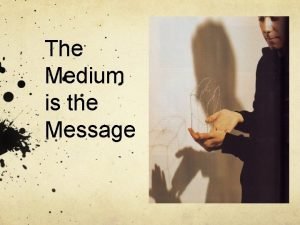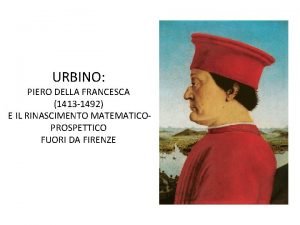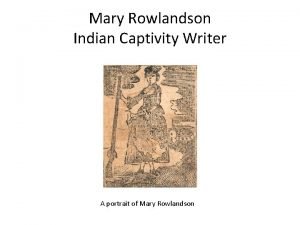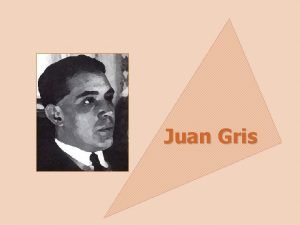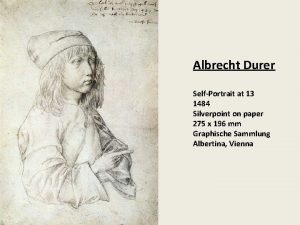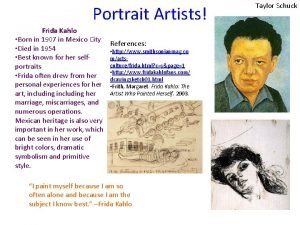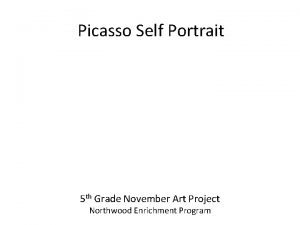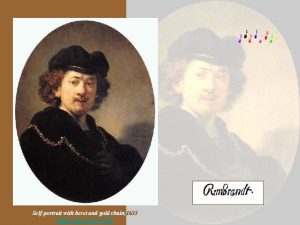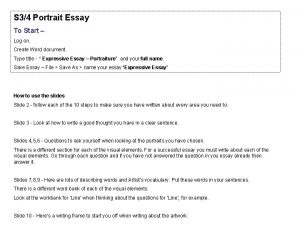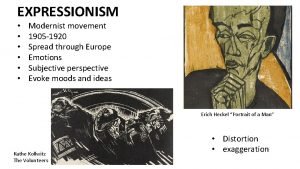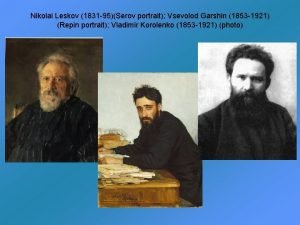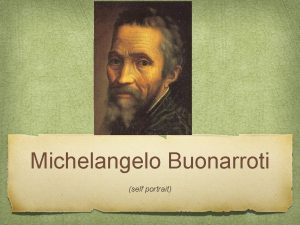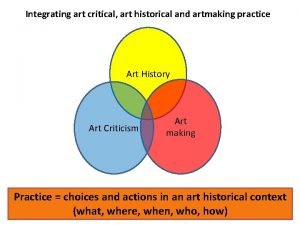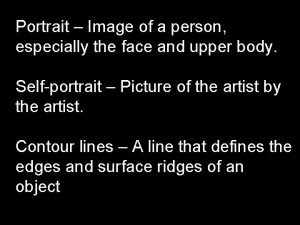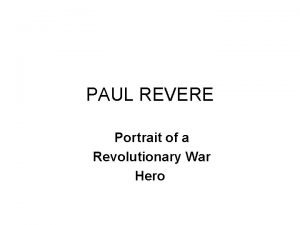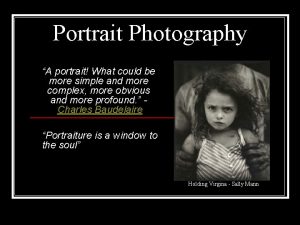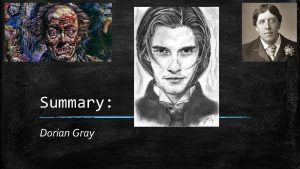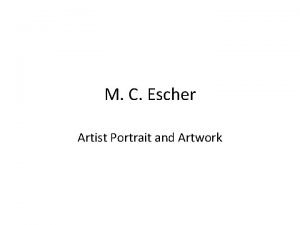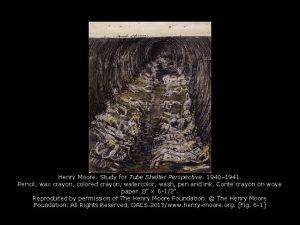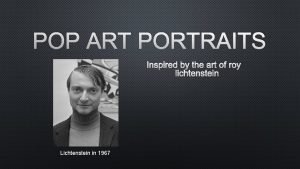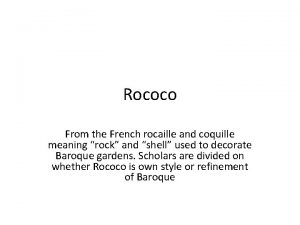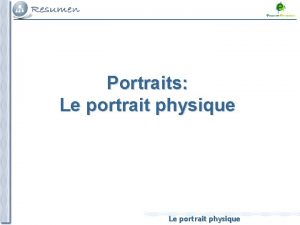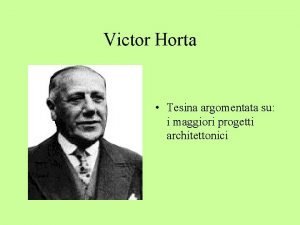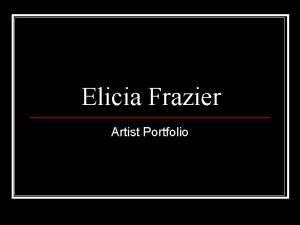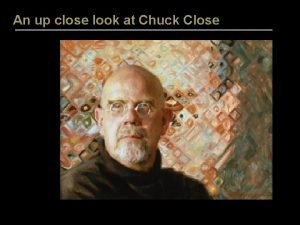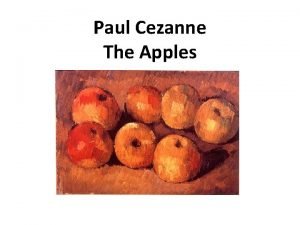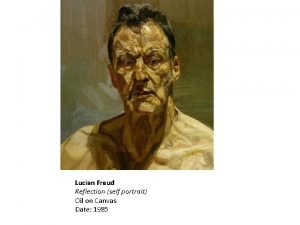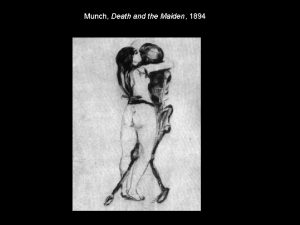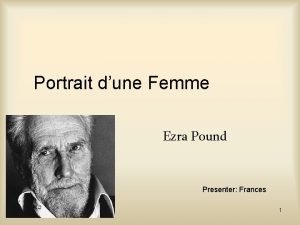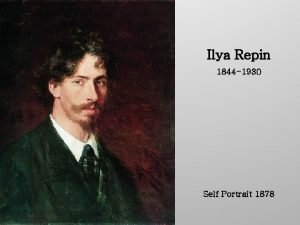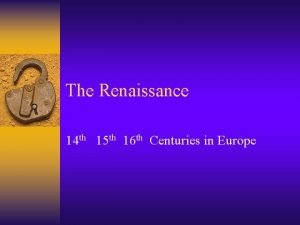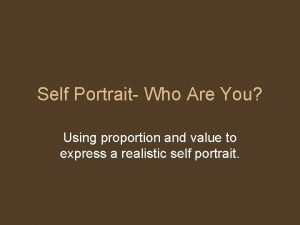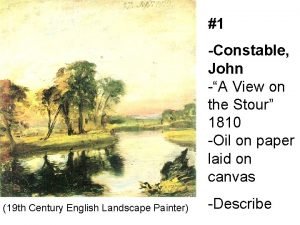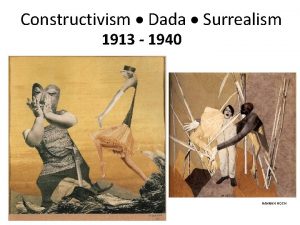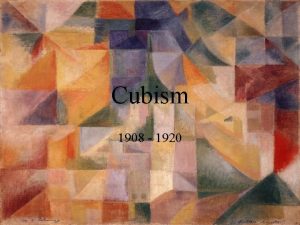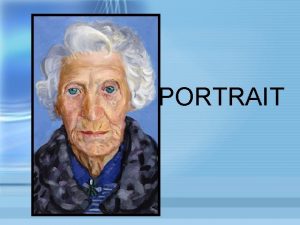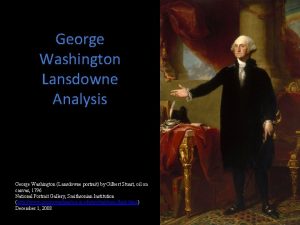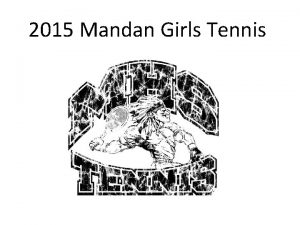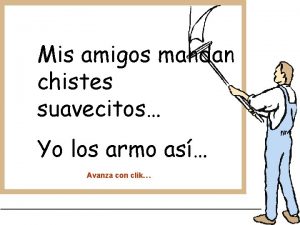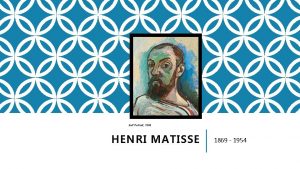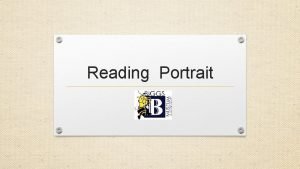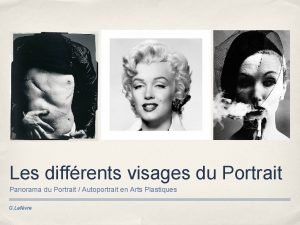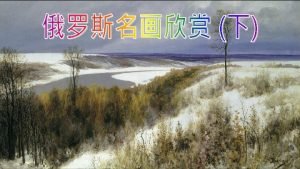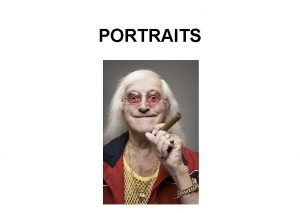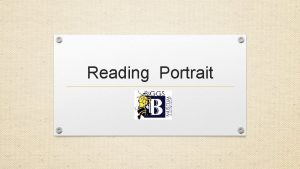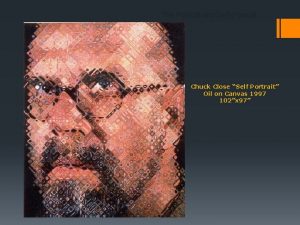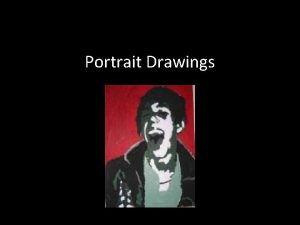Portrait of Mahtotohpa Mandan 1861 1869 George Catlin







































































































- Slides: 103

Portrait of Mah-to-toh-pa – Mandan, 1861 - 1869 George Catlin 1796 - 1872

Catlin Painting the Portrait of Mah-to-toh-pa—Mandan, 1861/1869 • “There is occasionally a chief or warrior of such extraordinary renown, that he is allowed to wear horns on his headdress. … • The reader will see this custom exemplified in the portrait of Mah-to-tohpa…. [He is] the only man in the nation who was allowed to wear the horns. ”


• So wrote George Catlin in Letters and Notes on the Manners, Customs, and Conditions of the North American Indians, begun during the artist’s twothousand mile journey along the upper Missouri River to what is now North Dakota.

George Catlin

• It was the first of three self-financed trips between 1832 and 1836 that Catlin undertook in order to capture what he rightly believed to be the final and most thorough visual record of the indigenous cultures of the frontier.

1830 • Just two years earlier, the Indian Resettlement Act, designed to send Eastern Woodlands tribes inland in order to “save” them from the steady encroachment of white civilization, had passed Congress.


The White Cloud, Head Chief of the Iowas

• George Catlin agreed with the resettlement policy. • In his practical (yet sentimental) values, he was representative of the Jacksonian era, in which the United States, finally in control of the wilderness, felt a wave of nostalgia for what it was about to lose.

Andrew Jackson

• George Catlin was born on July 26, 1796, in Wilkes-Barre, Pa. • His father, a retired lawyer, sent George to Connecticut to study law in 1817. • Two years later he began practicing law in Wilkes-Barre.

George Catlin, Self Portrait

George Catlin

• But he was more interested in painting, natural history, and Native Americans and by 1821 had taught himself portrait painting. • He may have received instruction in painting from Charles Wilson Peale and possibly Thomas Sully. • In 1823 he painted miniatures in Philadelphia, and on seeing a delegation of Native Americans from the Far West, he determined to become their historian.

• In 1828, according to the artist, an encounter with a delegation of Winnebago on their way to Washington changed the course of his career.

Ah-yaw-ne-tak-oár-ron

• Claiming his interest in America's 'vanishing race' was sparked by a visiting American Indian delegation in Philadelphia, he set out to record the appearance and customs of America's native people.

Little Bear, Hunkpapa Brave, 1832

• He went to Albany, N. Y. , to paint a portrait of Governor De. Witt Clinton, who later assisted Catlin in many ways. • A frequent guest at the governor's mansion, Catlin met there Clara Bartlett Gregory, whom he married in 1828.

• Specializing in portraiture, Catlin was attracted to the American Indian as a subject after observing a delegation of chiefs at Peale's museum in Philadelphia. • He produced his first Indian portrait when he painted the likeness of Seneca orator Red Jacket at Buffalo, New York, in 1826. • During the next 4 years he divided his time between commissioned portraits and studies of Native Americans.

Seneca orator Red Jacket at Buffalo, New York Medal was given to Him by George Washington. Painting by Charles Bird King c. 1828

• In 1830 Catlin set out to explore the continental interior.




Buffalo Bull Grazing c. 1845

Buffalo Hunt under the Wolf-skin Mask, detail, 1832 -33


• Finally he gave up his lucrative career as a portraitist and in 1830 went to St. Louis to study and depict Native Americans before they were changed by civilization. • St. Louis became Catlin’s base of operations for five trips he took between 1830 and 1836, eventually visiting fifty tribes. • After 7 years of hard work under very difficult circumstances, he fulfilled his ambition.

• For the first 2 years he painted portraits of tribal delegates who came to St. Louis to talk with Gen. William Clark, governor of the vast Indian Territory (a close friend of the artist). • He began his journey in 1830 when he accompanied Gen. William Clark on a diplomatic mission up the Mississippi River into Native American territory.

• In 1832 he ascended the Missouri River by steamboat as far as Fort Union, in present North Dakota. • He spent several weeks among indigenous people still relatively untouched by European civilization.

• In 1832 he traveled 2, 000 miles up the Missouri River by steamboat, later making a trip to Texas and also to the upper Mississippi River. • During these trips he worked at a frantic pace, so that he had about 500 portraits and sketches, a superb collection of Naive American artifacts, and notes and impressions of 38 different tribes to be used later in his lectures and books.

• Two years later he visited Fort Gibson, Indian Territory, at that time the administrative center of a large area that had been set aside for the relocation of displaced tribes from the United States. • Indigenous groups such as the Osage, Kiowa, and Comanche opposed the government's resettlement policy, and Col. Henry Dodge was sent out to establish peace between contending parties.

Comanche village scene c. 1834.

• In the summer of 1834, the Dodge. Leavenworth Expedition traveled from Fort Gibson to the Wichita Mountains, in present southwestern Oklahoma, to treat with tribes in that area. • Catlin accompanied the dragoons. His views of the region and its people, later widely exhibited and published, were the first to be obtained by any artist.

I-o-wáy, One of Black Hawk's Principal Warriors, 1832

River Bluffs, 1320 Miles above St. Louis, 1832

Clay Bluff, 1700 Miles above St. Louis, 1832

• There, at the edge of the frontier, he produced the most vivid and penetrating portraits of his career. • Later trips along the Arkansas, Red and Mississippi rivers as well as visits to Florida and the Great Lakes resulted in over 500 paintings and a substantial collection of artifacts.

• Catlin had early exhibitions of his work in Pittsburgh, Cincinnati, and Buffalo. • In 1836 he moved this material home to Albany, where he finished paintings and made additional ones from field sketches. • He planned to hold an exhibition and lecture in New York and other big eastern cities and then take his unique collection to Washington, where he hoped it would become the nucleus of a great national museum financed by the U. S. government.

Crow Lodge of Twenty-five Buffalo Skins, 1832 -33, Crow/Apsaalooke,

• In New York City, "Catlin's Indian Gallery" in 1837 was a tremendous success. • This was the first "Wild West" show - one of the most long-lasting and popular interests America was to experience. • Catlin's message of the noble Native American corrupted by the white man disturbed many people.

Ud-je-jock, Pelican, a Boy, 1845, Ojibwe/Chippewa

• Although he used all his intellect and charm on influential friends in Washington, Congress did not purchase his collection, which he exhibited in the capital in 1838. • To his disappointment his Indian Gallery had little success in Baltimore, Philadelphia, Boston, or in its second showing in New York.

Sha-kó-ka, Mint, a Pretty Girl, 1832, Mandan/Numakiki

• In 1839 he took his gallery to London, where he again met with financial success. • Anticipating the Wild West shows of a later date, Catlin's exhibit featured lectures and demonstrations of American Indian hunting, war, and weaponry, displays of artifacts collected during his travels in the West, and • Live performances by "Native Dancers from the Wilds of America. • His wife and two daughters joined him in London.

• In 1841 he published his first book on Native Americans in North America, Letters and Notes on the Manners, Customs and Conditions of the North American Indians (2 vols. , 1841) • He published his second book, North American Indian Portfolio (1844).

Kee-o-kuk the Watchful Fox, Chief of the Tribe, 1835,

• In 1845 he took his show to Paris, but the revolution of 1848 (The French Revolution) forced him to return to London, where he opened yet another exhibit and published Eight Years' Travel and Residence in Europe (2 vols. , 1848). • While touring abroad, Catlin's wife and son both died, leaving him three daughters, whom he entrusted to the care of a brother -in-law in New York.

• Chronically in debt, Catlin eventually lost his life’s work plus many priceless artifacts to creditors. • In Paris and Brussels he undertook to recreate his celebrated North American Indian gallery from memory.


• Between 1853 and 1860 he made several trips to South America financed by Baron Wilhelm von Humboldt. • He may also have visited the American West again in 1854. • In 1870 he returned for the last time to the United States and exhibited at the Smithsonian Institution.


• Catlin produced two major collections of paintings of American Indians and published a series of books chronicling his travels among the native peoples of North, Central and South America.


• Falling ill, he was remanded to the care of his family in Jersey City, New Jersey, where he died on December 23, 1872.

The War Dance, By The Ojibeway Indians

• Today the Smithsonian Institution owns the largest inventory of Catlin's work. • Other collections of importance are held by the American Museum of Natural History, the New York Historical Society, and the Gilcrease Museum in Tulsa, Oklahoma.

The Mandan Buffalo Dance

• Catlin painted a full-length portrait of Mah-to-toh-pa, second chief of the Mandan people, in late summer of 1832. • The Mandan, a stationary agricultural and hunting tribe living in domed timber-andearth lodges, occupied two villages above the Missouri River near present-day Bismarck.

• In his Notes, the artist writes that Mah-totoh-pa spent all morning dressing for his likeness. • When he arrived in Catlin’s dwelling, surrounded by admiring women and children, he brought a buffalo-skin robe that he had painted with the history of his battles.


• And he was wearing the headdress mentioned above. • In addition to the war-club seen here, Mahto-toh-pa carried bow and arrows, a lance, a shield, tomahawk, and a scalping knife, and wore a magnificent bear-claw necklace.

• Catlin’s method was to work quickly, “chalking out” the outlines of the figure on canvas, • Building up the head and bust in warm tones, and then often blocking in the rest of the work, including the body and details of the costumes, to be finished later.

• On careful inspection we can see that the artist does not represent the chief’s costume as he described it. • Missing are the robe, the necklace, and all the instruments of war. • Catlin admits in his Notes that he altered the chief’s dress to enhance the “grace and simplicity of the figure, ” • although some historians believe the artist took away the weapons because he did not want Mah-to-toh-pa to appear overly threatening to a white audience.

• This image of Catlin painting the chief is one the artist reproduced from memory later in his life; • It derives from a print that served as the front is piece to his Notes, published in 1841, when he was living in England.

• Catlin’s Notes tell us that the painting is incorrect in many details: • the location is not indoors, and the individuals surrounding the chief include braves. • Even Catlin’s attire is a little too neat for the wilderness. • Surrounded by onlookers, he seems to be showing off a bit, and indeed, when we look carefully, it becomes apparent that Catlin’s role as artist is really the subject of this work.

• The glowing canvas on its makeshift easel occupies the center of the painting, • Our eyes travel between Mah-to-toh-pa and his likeness. • The openmouthed audience, who according to Catlin were aghast at his skill in capturing what many Indians believed to be a part of the sitter’s spirit, is eloquent testimony to the artist’s ambition and stunning accomplishment.

Mandan Indians

"Prairie Meadows Burning" While a Fort Leavenworth visitor in the fall of 1832 he wrote about the prairie fires he witnessed.

Two Comanche Girls 1834

• Catlin and Mah-to-toh-pa developed a close relationship: the painter was one of only two white men to observe the Mandan sacred rite, the O-kee-pa, before the tribe’s extinction from smallpox in 1837.


From Catlin’s notes … • "'Now we have it!' (exclaimed my host …) the grand ceremony has commenced. … I seized my sketch-book, and all hand of us were in an instant in front of the medicine-lodge, ready to see and hear all that was to take place. … • There were on this occasion about fifty young men who entered the lists, and as they went into the sacred lodge, each one's body was chiefly naked, and covered with clay of different colours; some were red, others were yellow, and some were covered with white clay, giving them the appearance of white men. • Each one of them carried in his right hand his medicinebag—on his left arm, his shield of bull's hide—in his left hand, his bow and arrows, with his quiver slung on his back.

• George Catlin Interior View of the Medicine Lodge, Mandan O-kee-pa Ceremony, 1832 Mandan/Numakiki




Bull Dance, Mandan O-kee-pa Ceremony, 1832, Mandan/Numakiki

• "When all had entered the lodge, they placed themselves in reclining postures around its sides, and each one had suspended over his head his respective weapons and medicine, presenting altogether, one of the most wild and picturesque scenes imaginable … • the medicine or mystery-man … was left sole conductor and keeper; and according to those injunctions, it was his duty to lie by a small fire in the centre of the lodge, with his medicine-pipe in his hand, crying to the Great Spirit incessantly, watching the young men, and preventing entirely their escape from the lodge, and all communication whatever with people outside, • for the space of four days and nights, during which time they were not allowed to eat, to drink, or to sleep, preparatory to the excruciating self-tortures which they were to endure on the fourth day.

• Today art dealers are willing to pay up to $2, 000 (Two million Dollars) for George Catlin’s work.

Two Kettles chief Black Rock, Ee-ah-sa-pa, 1832

Chief Micanopy

Chief Osceola, 1838

In Winter


Ojibwa Native Americans: The Boy chief, War Chief Driving Cloud, Flying Gull and others.

Tul-lock-chish-ko, Drinks the Juice of the Stone, in Ball Player's Dress, 1834













Essay Question: • Explain why George Catlin’s work is important to the history of the United States of American as it chronicled Native American life. • Why do you think it was not well received in certain areas of the country? • Remember SEEC. Use complete sentences, paragraphs and always good spelling!!

 George catlin self portrait
George catlin self portrait Unionistička stranka 1861
Unionistička stranka 1861 Springfield model 1861 rifle facts
Springfield model 1861 rifle facts Lush j in currie v. misa
Lush j in currie v. misa Civil war 1861/1862
Civil war 1861/1862 John brown poster
John brown poster Civil war 1861/1862
Civil war 1861/1862 Features of indian council act 1861
Features of indian council act 1861 Tensionometer
Tensionometer Mendeleev lab answer key
Mendeleev lab answer key In 1869, dmitri ivanovich mendeléev
In 1869, dmitri ivanovich mendeléev 2nd october 1869
2nd october 1869 Ernst haeckel ecology definition
Ernst haeckel ecology definition October 2 1869
October 2 1869 When was henri matisse born and died
When was henri matisse born and died 1954-1869
1954-1869 Scoperta dna 1869
Scoperta dna 1869 Rīgas latviešu biedrības nams uzcelts 1869. gadā.
Rīgas latviešu biedrības nams uzcelts 1869. gadā. George washington x king george iii
George washington x king george iii George washington and thomas jefferson venn diagram
George washington and thomas jefferson venn diagram Patrician forehead
Patrician forehead The rainbow portrait symbolism
The rainbow portrait symbolism Ma jolie
Ma jolie Michelangelo born
Michelangelo born Panofsky arnolfini portrait
Panofsky arnolfini portrait Robinson crusoé portrait
Robinson crusoé portrait Shakespeare ppt template
Shakespeare ppt template Terentius neo and wife
Terentius neo and wife Paul signac self portrait
Paul signac self portrait Gustave courbet self portrait
Gustave courbet self portrait Self portrait 1889 by vincent van gogh
Self portrait 1889 by vincent van gogh Robert cornelius self portrait 1839
Robert cornelius self portrait 1839 Vik muniz toy soldier
Vik muniz toy soldier Elbow impressionism
Elbow impressionism Arnolfini double portrait meaning
Arnolfini double portrait meaning Portrait mary rowlandson
Portrait mary rowlandson Portrait of the artist s mother
Portrait of the artist s mother Exemple de portrait article de presse
Exemple de portrait article de presse Chinese portrait game
Chinese portrait game Durer self portrait 1484
Durer self portrait 1484 Portrait of frida kahlo (retrato de frida kahlo)
Portrait of frida kahlo (retrato de frida kahlo) Picasso cubism self portrait
Picasso cubism self portrait Phase portrait plotter wolfram
Phase portrait plotter wolfram Adobe illustrator self portrait
Adobe illustrator self portrait Line self portrait
Line self portrait Silhouette portrait 3 amazon
Silhouette portrait 3 amazon Stress portrait of a killer summary
Stress portrait of a killer summary Self-portrait with beret and gold chain
Self-portrait with beret and gold chain Portrait of the journalist sylvia von harden
Portrait of the journalist sylvia von harden What started the expressionism movement
What started the expressionism movement Family portrait asl story answers
Family portrait asl story answers Chuck close photorealism
Chuck close photorealism Self portrait
Self portrait Televisin digital terrestre
Televisin digital terrestre Portrait essay
Portrait essay What is the law of multiplicity of evidence
What is the law of multiplicity of evidence Michelangelo autoportrait
Michelangelo autoportrait Art making practice
Art making practice Foreshortening portrait
Foreshortening portrait Caracalla portrait
Caracalla portrait Mc escher self portrait
Mc escher self portrait Portrait of paul revere by john singleton copley
Portrait of paul revere by john singleton copley Types de portrait
Types de portrait Torn paper self portrait
Torn paper self portrait Dorian gray plot
Dorian gray plot Baroque art in france
Baroque art in france Wife of bath portrait
Wife of bath portrait M c escher portrait
M c escher portrait How to draw ears on a self portrait
How to draw ears on a self portrait Henry moore tube shelter perspective
Henry moore tube shelter perspective Portrait matting
Portrait matting Self portrait composed of many pieces
Self portrait composed of many pieces Roy lichtenstein influences
Roy lichtenstein influences Oleg shuplyak
Oleg shuplyak Icicle star andy goldsworthy
Icicle star andy goldsworthy Charcoal self portrait
Charcoal self portrait Andy warhol self portrait 1986
Andy warhol self portrait 1986 Andy warhol campbell soup
Andy warhol campbell soup Elisabeth louise vigee le brun self portrait 1790
Elisabeth louise vigee le brun self portrait 1790 Trubyte teeth
Trubyte teeth Le portrait physique
Le portrait physique Victor horta portrait
Victor horta portrait Portrait artist portfolio
Portrait artist portfolio Person helping someone
Person helping someone Us painter
Us painter Self portrait with apple
Self portrait with apple Lucian freud queen elizabeth ii
Lucian freud queen elizabeth ii Bill munch
Bill munch 123moviescz
123moviescz Portrait photography old woman
Portrait photography old woman Presenter frances
Presenter frances Ilya repin self portrait
Ilya repin self portrait Henri rousseau autoportrait
Henri rousseau autoportrait Patrician carrying busts
Patrician carrying busts Jacques emile blanche proust
Jacques emile blanche proust Albrecht durer self portrait in a fur collared robe
Albrecht durer self portrait in a fur collared robe Proportion portrait
Proportion portrait Rosa la rouge toulouse lautrec
Rosa la rouge toulouse lautrec It is a self portrait composed of many pieces
It is a self portrait composed of many pieces Hannah hoch the painter
Hannah hoch the painter Juan gris (1887–1927)
Juan gris (1887–1927) Impressionist self portrait
Impressionist self portrait Hamlet portrait
Hamlet portrait Resolutions size
Resolutions size
